Pocket TVs (1977-83)
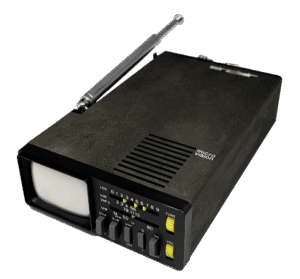
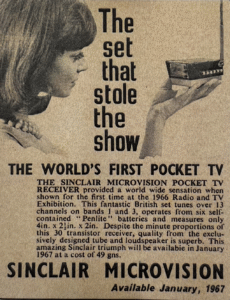
Press Advertisement for the Microvision Prototype, 1966. Image: Published in Practical Wireless, December 1966.
Sinclair’s first mass-produced portable TV, it marked a turning point in the decade-long quest to miniaturise television. Building on an earlier 1966 prototype called Microvision, it used many custom-made components, including a 2-inch black-and-white CRT developed with German firm AEG Telefunken. Supporting both PAL and NTSC across VHF and UHF, it was the world’s first truly micro multi-standard TV. Designed by John Pemberton, it won a 1978 Design Centre Award. Marketed with business travellers in mind, it was sold abroad and through luxury retailers like Harrods, commanding a price described as “ounce-for-ounce, more costly than solid silver”.
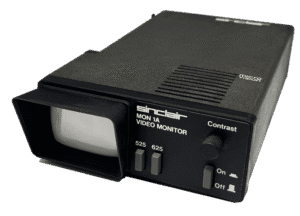
Adapted from the MTV-1, this ruggedised black-and-white monitor was developed for use in industrial and specialist settings. Housed in a durable case like those used in police radios, it displayed fixed-line data rather than live broadcasts. One key user was Bywood Electronics, a British company that employed the device for compact visual readouts. Though never a mass-market item, the Mon1A extended Sinclair’s CRT technology into professional contexts—foreshadowing future uses of mobile digital display.
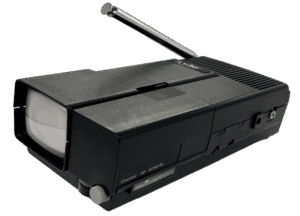
A more affordable successor to the TV1A, this UK-focused model was redesigned for easier production and improved safety. It retained the 2-inch screen but introduced a plastic case and calculator batteries to cut costs. Though lacking international tuning, it reflected Sinclair’s aim to make pocket TVs widely accessible. By this point, the company faced mounting financial strain, and public investment—initially granted to sustain the company afloat—soon swayed, marking a period of transition as Clive Sinclair began focusing on “Sinclair Instrument”, a separate venture already in motion.
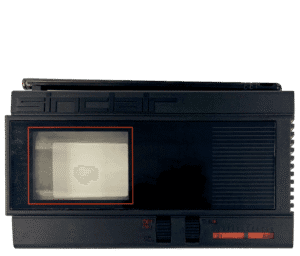
Also known as the FTV1, this was the company’s most ambitious attempt to create a truly pocket-sized television. The slim case designed by Rick Dickinson—also behind the ZX Spectrum—contained an unconventional CRT with a side-mounted electron gun and a magnifying Fresnel lens. Manufactured for Sinclair by Timex in Dundee, Scotland, it built on flat-screen concepts first patented by physicist Denis Gabor in 1958. Released during growing competition from Japanese manufacturers, the TV80 struggled to compete commercially and carried high development costs—but still remains a striking example of portable television innovation.
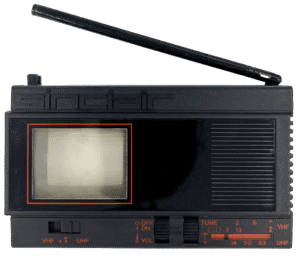
This international version of the TV80 added VHF tuning to the original UHF-only model, expanding its reach beyond the UK. It used a cathode-ray tube (CRT) in an unconventional way—scanning electrons from the side rather than the back—to make the unit thinner, while a Fresnel lens magnified the image on the small screen. Though challenging to manufacture, these early ideas helped shape Sinclair’s decades-long pursuit of portable television—a vision that prefigured today’s obsession with compact screens
